-
03-30-2021, 09:11 AM
#101
A bit about the Torrey Pines course.
(2008 Golf Digest )
"The site was formerly an army camp.
In 1940, fearful of a Japanese invasion, the federal government leased 710 acres of the Torrey Pines mesa from the city of San Diego for $1 per year, as well as 500 adjacent acres from private landowners, to create an artillery training camp. Camp Callan opened in January 1941, 11 months before Pearl Harbor and the American entry into World War II. It became a city of 15,000, with paved streets and nearly 300 buildings, including three theaters and five chapels.
Less than three months after the Japanese surrender in August 1945, the camp was declared surplus and the lease terminated. The feds then sold all the buildings to San Diego for $200,000, a princely sum at the time."
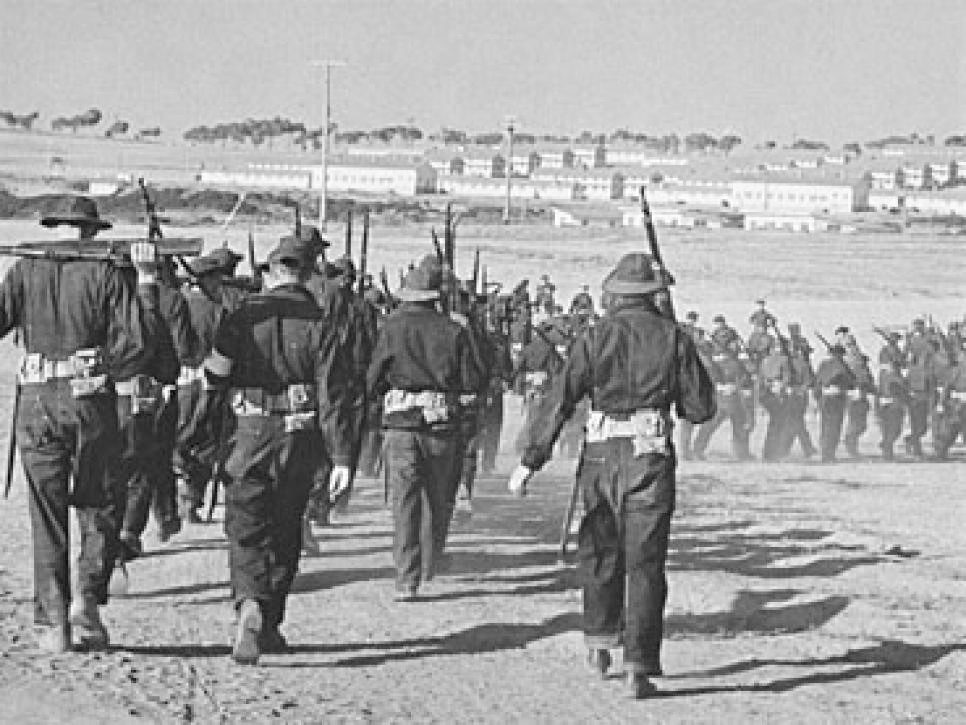
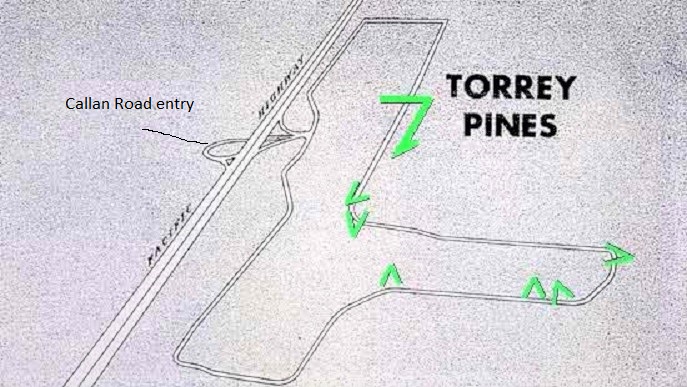
After the buildings had been razed, the streets of Camp Callan remained, and with the use of some rubber cones and hay bales, it became the Torrey Pines Race Course in 1951, a twisting, turning 2.7 mile circuit on which both sports cars and grand-prix racers competed. There is nothing left of the race course today, but old-timers recall the start-finish line somewhere in the vicinity of the eighth green of the South course. Drivers headed north, turned left (across what is today the sixth fairway) on a loop that headed toward the ocean, then away from it (east on the first fairway of the North Course). Turning north again, the race track soon made two right turns to head south on a long "straightaway" (which had a couple of jogs in it) parallel to the Pacific Coast Highway (now Torrey Pines Boulevard). Today, that straightaway is occupied by a small practice range, parking lots, the Torrey Pines Lodge, a Hilton hotel and many office buildings. The final loop crossed somewhere along the ninth and 15th holes.
In 1955 it was decided to convert the raceway into 36 golf holes. Its last race was conducted in January 1956, "
To be continued..
(KH)
-
03-30-2021, 09:32 PM
#102
-
03-31-2021, 03:48 AM
#103
World Champion

Ken H,
Great history / geography lesson, and a plan of the track - well done and thanks.
Borrowed some of your information for the S Moss 100S at Torrey Pines story on the Austin Healey thread.
There must be hundreds if not a thousand or more lost tracks in the USA.
Cheers
Roger
-
04-01-2021, 08:08 AM
#104
Roger,
I found another Torrey Pines map for you from the 1952 program.
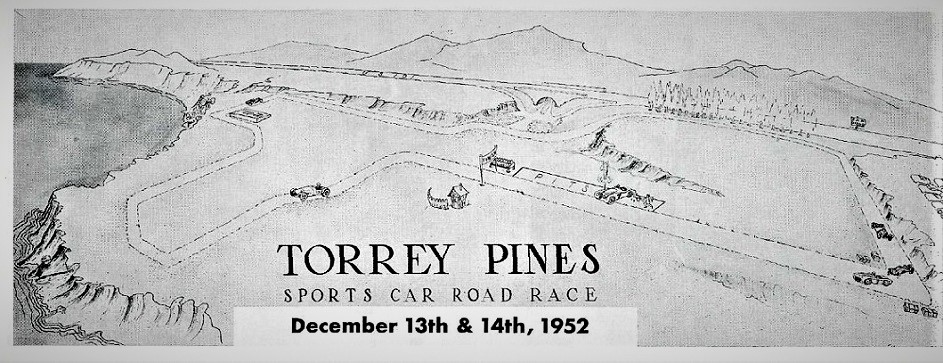
In the under 1500 cc class I noticed a Simca 8 doing well in the races.
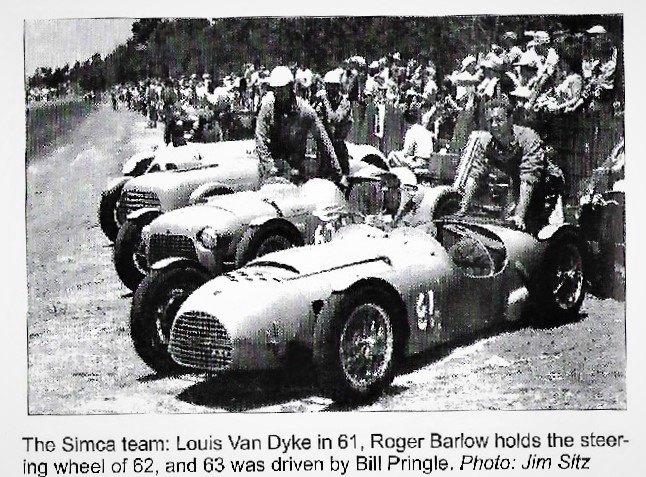
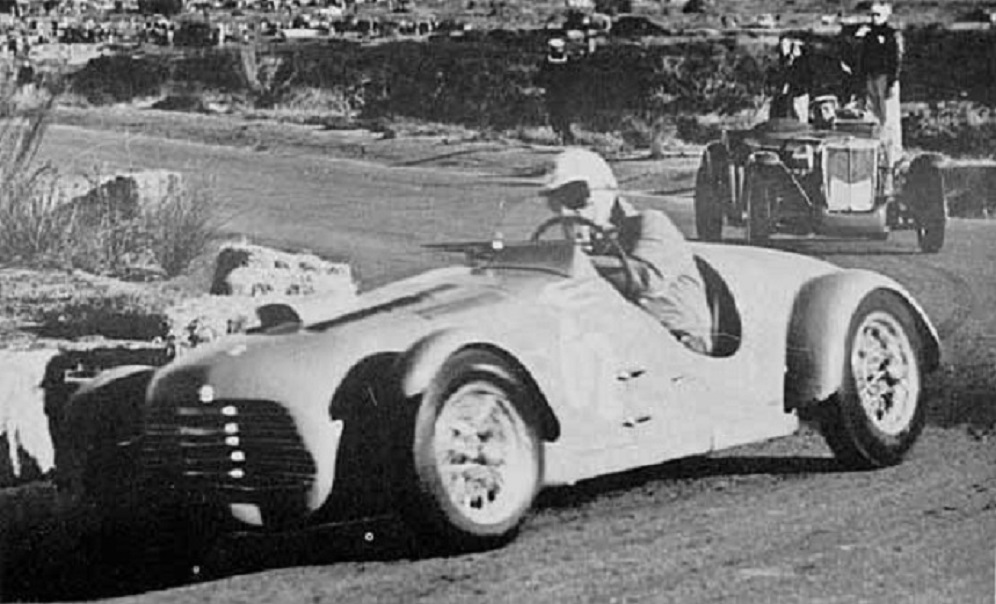
This explains what a Fiat "Huita" is.!
[SIZE=3]1952 Simca
The Barlow Simca 8 Special The Overlap of the Hot Rod and the Sports Car Cultures Growing up in the late 40’s and early 50’s we dreamed of custom “Hot Rods”…. modified 32 Ford roadsters with performance enhancement from Holley, Edelbrock, Iskenderian and others. Foreign sports cars were beginning to make their presence know, but for us, an American hot rod was the dream and California was the place where it was all happening. California was also the home of the man whose vision and ingenuity would merge hot rod technology with the emerging foreign sports car racing craze. His name was Roger Barlow, a mechanically minded Minnesota farm boy who had moved to southern California and was now the owner International Motors. Barlow once wrote that while hot rods had many virtues including low cost and excellent acceleration, control and superior road handling was not among them. He preferred that his “street rod” as he called it, come from Jaguar or Porsche. He also recognized that as competition intensified in the fast growing sports car road racing arena, more and more cars (often called Specials) were being modified to enhance performance. After sizing up the competition, Barlow concluded that the highly competitive 1500cc class was vulnerable and decided to build a “Special” sports car designed specifically for competition in the class; an adaptation of hot rod building technology to a modern sports car. His vision became known as the Barlow Simca 8 Special. Starting with a Simca “Huit” sport convertible Barlow removed the beautiful but ponderously heavy body. The frame was then widened to allow for a lower seating position. The engine was moved back six inches and the radiator moved forward by the same amount to obtain better weight Roger Barlow 1932 Ford roadster "Hot Rod" Simca "Huit" Sport 2 distribution. To help reduce unsprung weight, Borrrani-Rudge light alloy wire wheels were fitted that also helped to cool the powerful Simca hydraulic brakes allowing more air to reach the finned aluminum drums. Finally a feather light aluminum shell fashioned by master body builder Emil Diedt and cycle style front fenders were fitted. While absent the typical compound curves found on many sports cars, the body painted a light sky blue had a graceful appearance that made ingenious use of the original Simca grille. The original Simca 1390cc engine underwent high performance tuning by ace engine mechanic Bill Pringle. Adopting standard hot rod builder technology, the aluminum cylinder head of the engine was milled, ported and relieved. Next the flywheel was lightened and stiffer valve springs were fitted. To top it off, two Weber carburetors were installed on an Abarth manifold and the cooling fan was removed. The result was a thirty percent increase in bhp and a compression ratio boosted to 9.25:1. The Barlow Simca Special made its’ first race appearance at the 2nd Annual Palm Springs Road Races on January 4, 1951 where it failed to finish due to a transmission failure. From there it was entered in the Pebble Beach Cup race at the Pebble Beach Road Race on May 27, 1951 where Barlow finished 1st in class and 5th overall. The Simca Special was next entered in the two day racing event at the Carroll Speedway in Gardena, California. On July Saturday the 27th Barlow finished 2nd in the Trophy Dash and was winner of the S1.5 and the Match Race events on Sunday the 28th. Barlow The Barlow Simca 8 Special as it appeared before the fitting of the Dielt light weight aluminum body. A glimpse of the highly modified Simca engine in the Barlow Special with bonnet removed. The completed body of the Barlow Simca 8 Special featuring the adopted Simca grill. 3 next entered the car in the August 26th races at the SCCA Nationals in Elkhart Lake where he finished 1st in class and 13th overall. Barlow and the Simca Special went on to race at the Reno SCCA Nationals and in Palm Springs both in October ending the year at Torrey Pines in December taking 1st in class at every event and the SCCA Class Championship. The Simca Special was again in Elkhart Lake for the 1952 Kimberly Cup Race but by then time and competition caught up with the highly modified car and Barlow finished nearly three minutes behind the OSCA of Bill Spear and the Porsches of Karl Brocken and Johnny Von Neumann, all unmodified factory sports cars. So was the Barlow Simca Special a Hot Rod or a sports car? I think the only conclusion one can come too is that it was despite Hot Rod like modification, it was pure sports car. Hot Rods were built for the most part on lowered frames of American cars with little attention paid to cornering agility. They performed at their best racing down a long and straight drag strip. Sports car used suspensions that were built for superior handling on roadways curving both left and right. If you start with a sports car frame and suspension, not matter how many other components are modified, it is still a sports car. Note: The term “Huit” in the Simca name is French for eight. The Simca “Huits” all used 50 bhp engines. In French “road horsepower” terms, 50 bhp translates to 8 road horsepower, hence the Simca “Huit” or Simca
Last edited by khyndart in CA; 04-01-2021 at 08:12 AM.
-
04-01-2021, 03:45 PM
#105
I think you'll find that the Simca's original capacity was 1290, not 1390cc...
-
04-01-2021, 07:07 PM
#106
Ray,
Yes you are correct as it probably started as a 1951 Simca 8 type 1.22 cc engine and Roger Barlow then worked on improving the performance from that unit
Whatever he did it worked well for him !
(Ken H )
Last edited by khyndart in CA; 04-01-2021 at 07:17 PM.
-
04-02-2021, 12:32 AM
#107
Lucky man...
When I played with Simcas I found their heads to be awfully soft.
Maybe mine was too for continuing to play with them for so long.
-
04-02-2021, 08:54 AM
#108
In December 1952, Phil Hill arrived at Torrey Pines to drive a 1952 Jaguar XKC 120 (C-Type)# 2 for the local Jaguar dealership owned by Charles Hornburg.
Not only was Hill an excellent driver but also helped prepare the car on race day.
Preparing the C-Type for the big race parked beside the Simca Special.
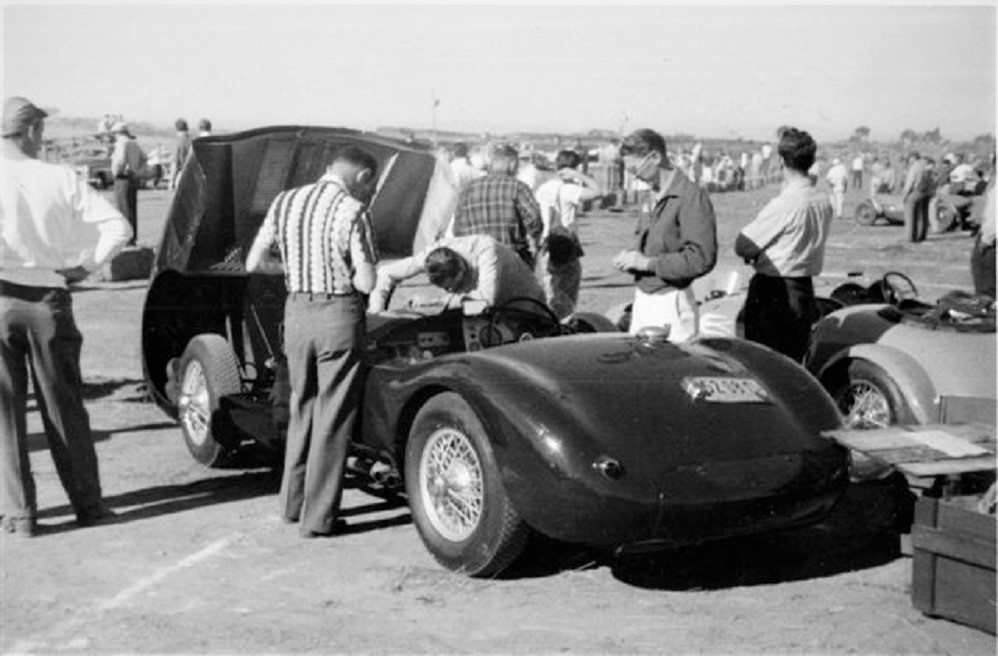
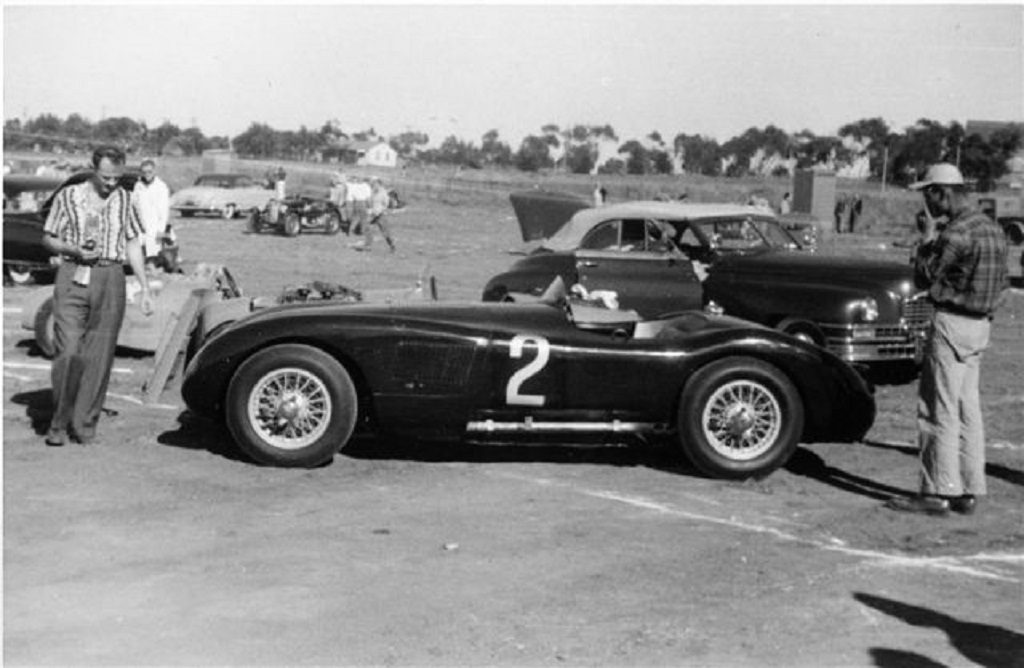
-
04-02-2021, 04:51 PM
#109
-
04-03-2021, 12:32 AM
#110
It looks like it's just out of the body shop!
I like the pics of Phil playing under the bonnet...
-
04-06-2021, 07:11 AM
#111
-
04-06-2021, 11:27 PM
#112
World Champion

Love " Flying Shingle " - Ken Miles was one great driver and engineer, has a good name too Mr Hyndman !! 
-
04-07-2021, 05:33 AM
#113
World Champion

-
04-07-2021, 05:57 AM
#114
The J-car...
Forerunner to the 7-litre Ford GTs which won at Le Mans.
-
04-07-2021, 07:20 AM
#115
-
04-08-2021, 04:15 AM
#116
The engine in that first Kurtis 500 is an interesting choice in America, Ken...
A 1500cc Ford OHV engine at that time could only have been the Consul engine, which I wouldn't have thought would have been so prolific on US shores. And then you have to ask, 'What gearbox might have been employed?'
Much more recently I saw a lovely Kurtis Buick in Michigan...
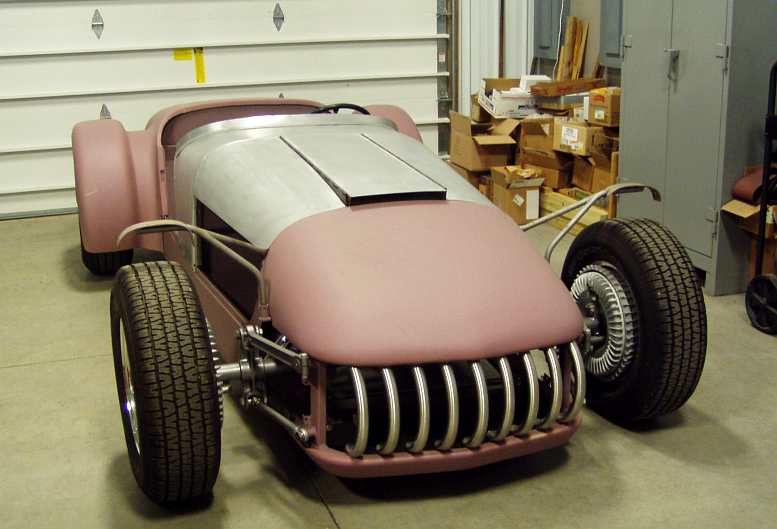
I thought this was a very evocative car, thoughts of Carrera Panamerica and all that. Who knows, it might also have raced at Torrey Pines some time?
-
04-08-2021, 11:57 PM
#117
Sorry folks but the aforementioned Bill Murphy 1953 Kurtis 500 has been sold.
It made for a pretty decent investment if purchased from the earlier ad.
For Sale: 1953 Kurtis-Kraft Midget in Saint Louis, Missouri. $595,000
A good history is described at this site.
https://classiccars.com/listings/vie...missouri-63146
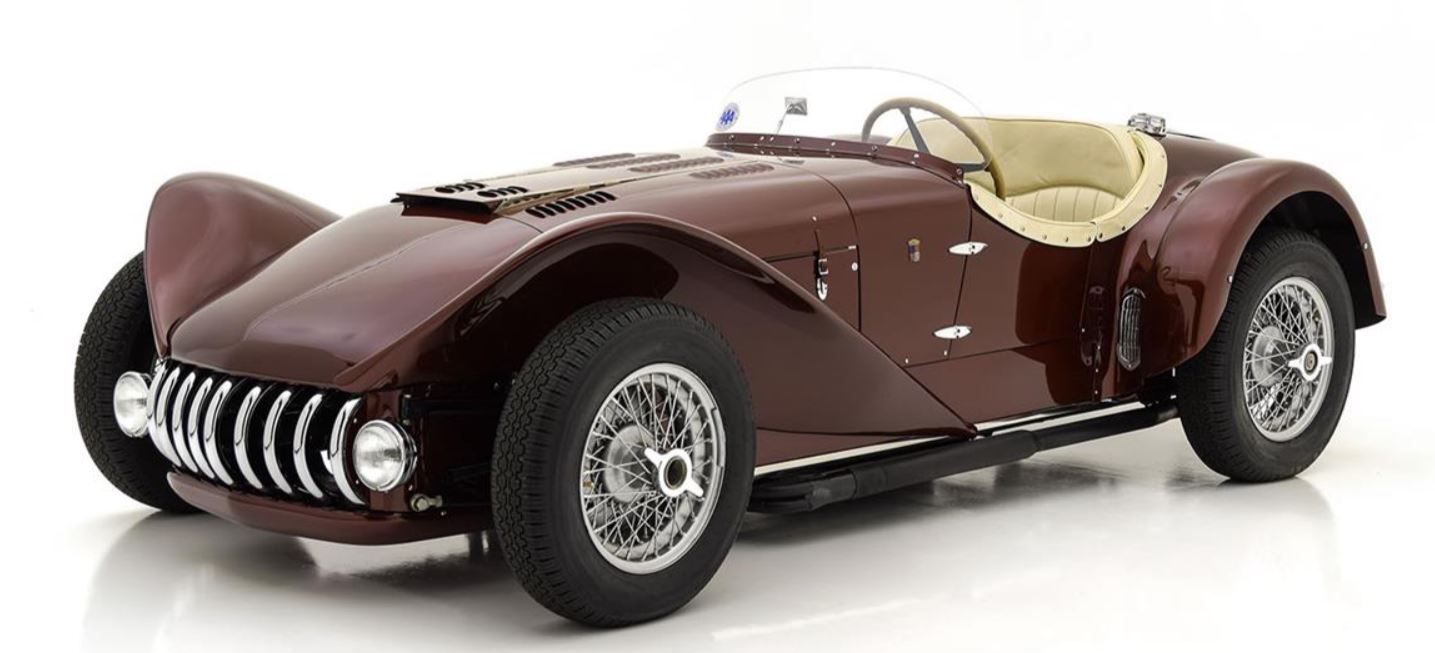
( Ken H.)
Last edited by khyndart in CA; 04-09-2021 at 12:10 AM.
-
04-13-2021, 07:51 AM
#118
-
04-14-2021, 01:50 AM
#119
World Champion

" (To be continued.. )
Ken H "
Will be a great story - John von Neuman, was associated with Ken Miles - Flying Shingle and later the " Pooper ", and didn't James Dean get both his 356 and the " Little Bastard " 550 through John v N ??
Interesting that early Porsche's were built in Austria, where Der Fuehrer came from - was he really German ?? Well his Peoples car was designed by Ferdinand Porsche. I understand that the Gmund Porsches were very much handbuilt.
Last edited by Roger Dowding; 04-14-2021 at 01:55 AM.
-
04-14-2021, 03:00 AM
#120
When the Porsche 356 Germund SL (for super light because of the aluminum body) 356/02-063 first competed in the USA in late 1951
it looked like this.
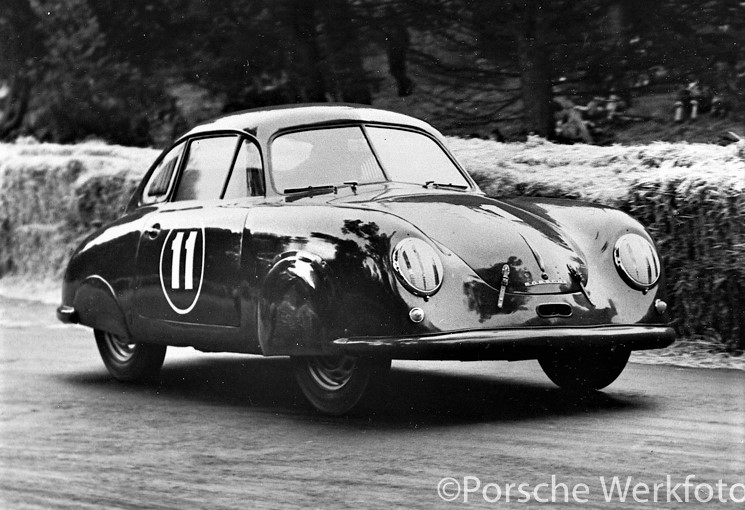
"Then in a surprise move, von Neumann commissioned Emil Diedt, a very talented metal worker in Southern California, to remove the coupé roof to improve the car’s aerodynamics and to reduce weight. In a surprise move, von Neumann commissioned Emil Diedt, a very talented metal worker in Southern California, to remove the coupé roof to improve the car’s aerodynamics and to reduce weight. This was an age when a race car had a very short serviceable life, and once it had gone beyond its use by date, it was open to almost any kind of butchery or modification. There was no doubt however that Diedt was a craftsman, and he lopped off the greenhouse of #063 turning it into a roadster, reducing the car’s weight by around 50kg and significantly reducing the frontal area. Von Neumann also removed the front wheel fairings as, despite improving the car’s aerodynamics, they restricted airflow to the front brakes causing them to overheat..
Here are some of the specs that kept the car in the Le Mans 1100 cc class.
Technical specifications: Porsche 356 SL
Engine 4-cylinder boxer engine, air-cooled
Capacity 1086cc
Bore x stroke 73.5 x 64mm
Valves 2-valves per cylinder, central camshaft
Power 46bhp @ 4000rpm
Carburettor 2x Solex downdraught
Gearbox Constant-mesh with 4-forward, 1-reverse gears
Clutch Single dry-plate
Top speed 160km/h
Suspension: Front Parallel trailing links acting on transverse torsion bars
Suspension: Rear Swing axles located by trailing links controlled by transverse torsion bars
Tyres 5.00 or 5.25 x 16 by Metzeler
Weight 640kg
Length 3860mm
Wheelbase 2100mm
Track (front) 1290mm; (rear) 1250mm
Fuel 75-litres
The car stayed in this way for many years and apparently had a hard life although it looked well restored when it appeared at the
Laguna Seca Historic Meet in 1998.
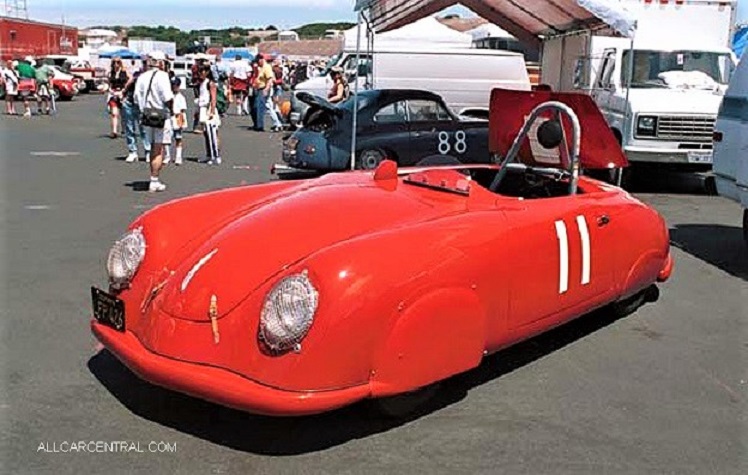
(Ken H)
Last edited by khyndart in CA; 04-24-2021 at 08:03 AM.
 Posting Permissions
Posting Permissions
- You may not post new threads
- You may not post replies
- You may not post attachments
- You may not edit your posts
-
Forum Rules



 Reply With Quote
Reply With Quote


